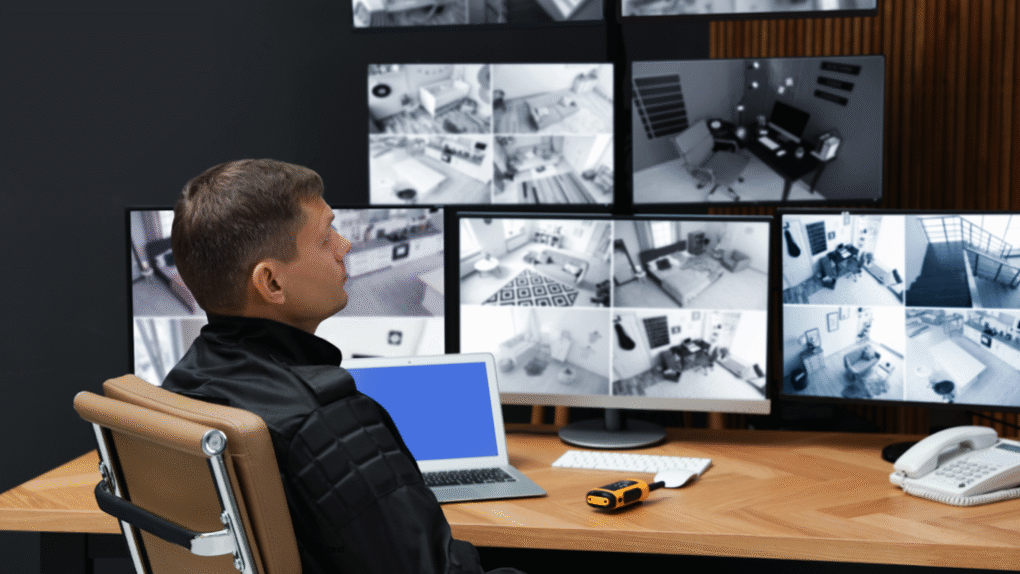
Your facility is expanding, and with that growth comes a whole new level of security challenges. Managing every entry point, monitoring crowds, and spotting potential threats manually just isn’t realistic anymore. That’s where artificial intelligence steps in, and it’s changing the game.
AI-powered security systems don’t just record; they analyze, detect patterns, and respond in real time. From identifying unusual behavior to preventing incidents before they unfold, these tools turn reactive security into proactive protection. The outcome? Safer spaces, sharper insights, and teams that can focus on strategy instead of endless surveillance. Here’s how AI is redefining safety across large facilities
How AI Security Technology Has Grown Up
You can’t appreciate where we’re headed without seeing where we’ve been. Security cameras used to be dumb boxes that recorded everything. Now? They’re basically digital detectives working 24/7 on threat detection in large facilities.
When Surveillance Got Smart
Remember the old days? Cameras rolled tape (or digital files), and somebody had to sit there watching screens or reviewing footage after something bad had already gone down. Totally reactive. Threats slipped through constantly because humans simply can’t stare at monitors without zoning out.
But here’s something that’ll grab your attention: research shows that AI/ML technologies can significantly improve the accuracy and efficiency of threat detection, particularly in handling unknown threats and automating detection processes. That’s not incremental improvement. That’s a complete paradigm shift for facilities drowning in security blind spots.
What Makes Modern AI Systems Different
Today’s artificial intelligence safety solutions don’t just record, they interpret. They’re analyzing your video feeds this very second, spotting patterns your security team would never catch manually. The system learns what “normal” looks like at your facility, then immediately flags anything weird. And no, they’re not replacing your security personnel. Think of AI as the ultimate assistant that does the boring monitoring grunt work and only bothers humans when there’s an actual problem worth investigating.
In healthcare environments, hospital security systems have evolved into something remarkably sophisticated. They’re designed specifically for round-the-clock operations and protecting vulnerable patients. AI-powered monitoring tracks things like unauthorized pharmacy access or situations where patient safety might be at risk. You end up with comprehensive security that naturally fits the complicated healthcare environment, without burying your security staff under false alarms and busywork.
Now that you understand the architecture powering these solutions, let’s dig into the specific capabilities that make AI-based systems catch threats with jaw-dropping accuracy and lightning speed.
Advanced Threat Detection Capabilities Using AI Surveillance
AI surveillance does something fundamentally different: it grasps context, spots risks, and kicks off responses automatically. These capabilities go miles beyond what even the best human operators can accomplish working alone.
Real-Time Behavioral Analysis
These systems track how people move, spotting sketchy behavior before it turns into something worse. Someone hanging around restricted doors for too long? The AI catches it. Crowd patterns forming that look abnormal? You’ll get pinged immediately. This is prevention in action, not just documentation after the fact.
Weapons and Dangerous Object Recognition
Sophisticated algorithms automatically spot concealed weapons, suspicious packages left behind, and similar threats. They plug right into your existing metal detectors and access control infrastructure, building multiple defensive layers. Full transparency here, they’re not flawless. Research found that AI models nearly always said no crime occurs in videos, or gave an ambiguous response, even though 39 percent did show a crime. This reinforces exactly why you need AI plus human judgment working together, not AI replacing humans entirely.
Environmental Hazard Detection
Modern facility security systems identify fire, smoke, gas leaks, flooding, basically any environmental danger through sensor fusion. Temperature spikes trigger warnings before situations escalate dangerously. It’s comprehensive safety monitoring from every possible angle.
Real-time detection stops threats as they’re unfolding, which is powerful. But the truly advanced AI security solutions do something even more impressive: they predict problems before they actually happen.
Industry-Specific Applications
Every facility type faces distinct challenges. AI security technology molds itself to whatever specific needs your environment throws at it.
Manufacturing and Industrial Settings
Factory environments are security nightmares. AI watches for PPE compliance violations, catches equipment malfunctions early, and prevents forklift accidents. Chemical spills get detected the instant they happen, protecting your workers and avoiding environmental disasters. Restricted area access gets tracked automatically, and only authorized people get into dangerous zones.
Educational Campuses
Schools and universities roll out AI for active threat detection and automated lockdown capabilities. Parking areas, dorms, and student commons, all monitored continuously. When emergency notifications need to blast across campus instantly, AI integrates with those systems seamlessly.
Commercial Real Estate
Office towers deploy AI for after-hours intrusion detection and managing security across multiple tenants. Parking structures, traditionally a monitoring nightmare, benefit enormously from AI’s ability to track vehicles and flag suspicious activity across enormous spaces.
These industry applications are critical, sure. But successful deployment really comes down to how well you weave AI technology into your facility’s current security setup.
Implementation and ROI Considerations
Bringing AI security onboard requires some strategic thinking, but the measurable returns absolutely justify your investment.
Cost-Benefit Analysis
Upfront costs depend on your facility’s size and how complex everything is. But think about what you get—fewer security incidents, lower insurance premiums, optimized staffing. Most facilities hit positive ROI somewhere between 18-24 months.
Integration with Existing Systems
Here’s great news: modern artificial intelligence safety solutions play nicely with your current cameras and infrastructure. You’re not ripping everything out and starting over. AI software transforms your existing equipment into intelligent monitoring powerhouses. Need cloud-based deployment? On-premise? Both options work depending on your security requirements and IT policies.
Ongoing Optimization
AI systems get smarter continuously through machine learning. They adapt to your facility’s unique rhythms and patterns, cutting down false positives while maintaining excellent threat detection accuracy. Regular updates mean your protection evolves as new threats emerge.
Smart implementation is essential, obviously. But you’ve also got to prove clear financial benefits and measurable returns to satisfy stakeholders and budget committees demanding justification.
Moving Forward with Intelligent Security
AI security technology isn’t just another upgrade; it fundamentally transforms how you protect large facilities. Real-time threat detection in large facilities combined with predictive analytics and automated responses creates genuinely proactive security instead of reactive scrambling. Yes, challenges exist.
But the advantages of artificial intelligence safety solutions massively outweigh the limitations. Whether you’re running healthcare facilities, manufacturing plants, educational institutions, or commercial properties, AI-powered facility security systems scale protection to match your exact needs. Don’t wait around for an incident to expose your vulnerabilities. Start exploring how intelligent security can revolutionize your facility’s safety right now.
FAQs on AI Security Answered
1. How accurate are AI threat detection systems?
Modern systems hit 95-98% accuracy when properly configured. They slash false alarms compared to old-school motion-based alerts. Still, combining AI with human judgment remains the gold standard for critical security decisions.
2. Can AI work with my current cameras?
Most AI platforms integrate beautifully with existing IP cameras and video management systems. You’re upgrading intelligence through software—not necessarily replacing hardware. Compatibility assessments figure out what works with your current setup.
3. What’s the typical implementation timeline?
Budget 3-6 months from initial assessment through full deployment. Phased rollouts let you test capabilities before going facility-wide. Pilot programs identify optimal camera placement and configuration for your specific environment.
